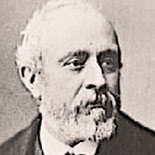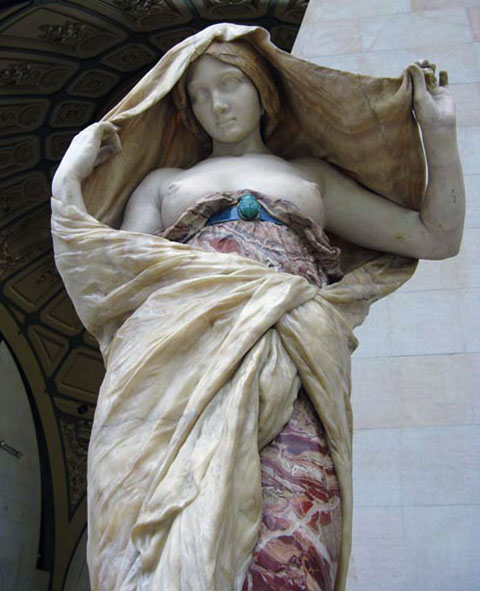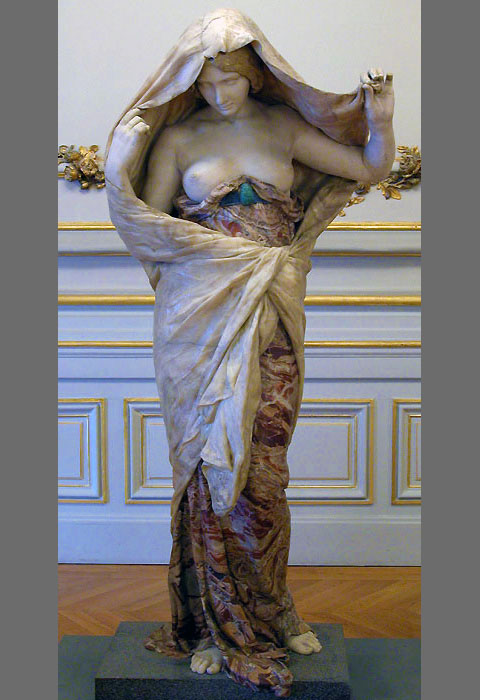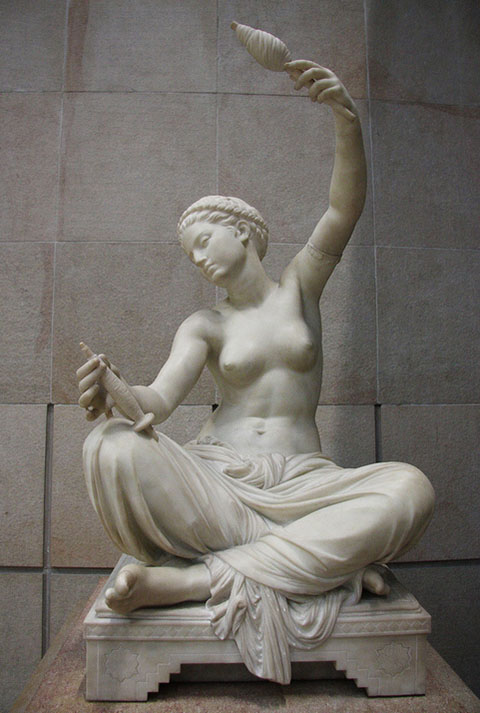 Louis-Ernest Barrias (April 13, 1841 – February 4, 1905) was a French sculptor of the Beaux-Arts school.
Louis-Ernest Barrias (April 13, 1841 – February 4, 1905) was a French sculptor of the Beaux-Arts school.
He was born in Paris into a family of artists. His father was a porcelain-painter, and his older brother Félix-Joseph Barrias a well-known painter. Louis-Ernest also started out as a painter, studying under Léon Cogniet, but later took up sculpture with Pierre-Jules Cavelier as teacher. In 1858 he was admitted to the École nationale supérieure des Beaux-Arts in Paris, where his teacher was François Jouffroy. In 1865 Barrias won the Prix de Rome for study at the French Academy in Rome. Barrias was involved in the decoration of the Paris Opéra and the Hôtel de la Païva in the Champs-Élysées. His work was mostly in marble, in a Romantic realist style indebted to Jean-Baptiste Carpeaux.
Barrias was very influenced by the Art Nouveau style, which was prominent in art during the fin-de-sidle in France. The voluptuous women figures used in many of his sculptures are a product of this time and style. Nature and the erotic was, also, used often in this type style of art, which is seen in many of Barrias’s works including, “Nature Unveiling Herself Before Science.” This piece was made in 1899, when this style was popular. His most known piece is “Portrait of the Young Mozart.”


